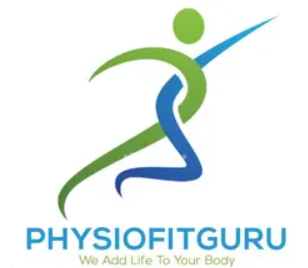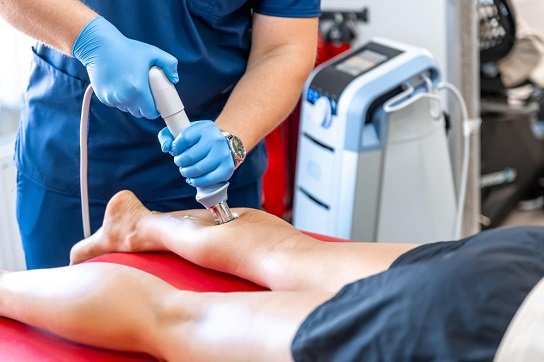Musculoskeletal pain can significantly affect daily life, from limiting mobility to causing chronic discomfort. Over the years, treatments have evolved from purely surgical interventions to minimally invasive and non-surgical options. One of the most promising therapies gaining attention in orthopedic and sports medicine is shockwave therapy. This non-invasive treatment has shown remarkable results in managing tendon injuries, joint pain, and even bone healing.
In this blog, we’ll break down the different types of shockwave therapy and their applications, benefits, and what patients can expect during treatment.
What is Shockwave Therapy?
Shockwave therapy is a non-invasive treatment that uses high-energy sound waves to stimulate healing in affected tissues. The therapy can be applied in two main forms:
- Extracorporeal Shockwave Therapy (ESWT): Delivers focused shockwaves directly to the affected area.
- Radial Shockwave Therapy (RSWT): Uses radial waves that disperse over a broader area, ideal for superficial injuries.
Both methods work by promoting blood circulation, breaking down calcified deposits, and stimulating the body’s natural healing process.
Extracorporeal Shockwave Therapy for Achilles Tendinopathy
Extracorporeal shockwave therapy Achilles tendinopathy has emerged as an effective treatment for patients suffering from chronic Achilles tendon pain.
How It Works:
The focused shockwaves target the degenerated tendon tissue, stimulating healing and reducing pain. ESWT encourages collagen production, which strengthens the tendon over time.
Benefits:
- Non-surgical approach with minimal downtime
- Reduces inflammation and pain
- Improves tendon elasticity and strength
Ideal Candidates:
- Patients with chronic Achilles tendon pain unresponsive to physical therapy
- Individuals looking to avoid surgery
Typical Procedure:
A session usually lasts 15-20 minutes, and most patients experience noticeable improvement after 3-5 sessions. Combining ESWT with stretching and strengthening exercises can enhance outcomes.
Radial Shockwave Therapy for Tennis Elbow
Radial shockwave therapy tennis elbow treatment is increasingly popular for managing lateral epicondylitis, a common overuse injury in athletes and manual workers.
How It Works:
Radial shockwaves penetrate the outer elbow, stimulating tissue repair and reducing inflammation. The therapy helps break down microtears in the tendon and promotes collagen regeneration.
Benefits:
- Non-invasive and drug-free
- Accelerates recovery for chronic cases
- Reduces pain and improves grip strength
Treatment Plan:
Typically, 3-4 sessions are recommended, spaced a week apart. Some patients notice improvement after just one session, but full recovery often requires consistent therapy combined with ergonomic adjustments and physiotherapy.
Shockwave Therapy for Calcific Shoulder Tendinitis
Shockwave therapy calcific shoulder tendinitis is particularly effective for patients with calcium deposits in the shoulder tendons, a condition that can cause severe pain and limited mobility.
How It Works:
High-energy shockwaves break down calcium deposits and trigger the body’s natural healing response. The therapy also stimulates blood flow to the affected area, helping repair tendon tissue.
Benefits:
- Reduces pain and stiffness
- Avoids surgical removal of calcium deposits
- Enhances shoulder mobility
Ideal Candidates:
Patients with persistent shoulder pain due to calcific tendinitis, especially when conservative treatments like anti-inflammatory medications or physical therapy have failed.
ESWT for Knee Osteoarthritis Benefits
Knee osteoarthritis can severely impact mobility and quality of life. ESWT knee osteoarthritis benefits include pain relief, improved function, and delayed need for surgery.
How It Works:
Shockwaves stimulate the repair of cartilage tissue, reduce inflammation, and promote joint lubrication. The therapy can also reduce stiffness, making daily movements easier.
Benefits:
- Non-surgical pain management
- Improves walking and bending capabilities
- Enhances joint flexibility
- Can be combined with exercise therapy for best results
Treatment Protocol:
Patients typically require 3-6 sessions spaced over several weeks. Many experience significant improvement after the first few sessions, with long-lasting effects when combined with lifestyle modifications and physiotherapy.
How Many ESWT Sessions for Heel Pain
Heel pain, often caused by plantar fasciitis, responds well to ESWT. But how many sessions are usually required?
Typical Recommendations:
- Most patients need 3-5 sessions, spaced 1 week apart.
- Each session lasts about 15 minutes.
- Some patients may experience relief after the first session, but maximum benefit is usually seen after the complete course.
Benefits:
- Reduces pain during walking and standing
- Promotes healing of the plantar fascia
- Non-invasive alternative to corticosteroid injections or surgery
- Non-Surgical Shockwave Therapy for Bone Nonunion
Bone nonunion occurs when a fracture fails to heal properly. Non-surgical shockwave therapy for bone nonunion has emerged as an effective alternative to surgery in select cases.
How It Works:
High-energy shockwaves stimulate bone regeneration by enhancing blood flow and promoting osteoblast activity. This encourages the body to repair the fracture naturally.
Benefits:
Avoids surgical intervention and associated risks
Shorter recovery period compared to surgery
Can be combined with immobilization or other orthopedic treatments
Treatment Course:
The number of sessions varies based on the severity and location of the nonunion, but most patients require 4-6 sessions over several weeks. Regular imaging is used to monitor progress and bone healing.
Also read :- How Many ESWT Sessions for Heel Pain.
Advantages of Shockwave Therapy
Across all applications, shockwave therapy offers several advantages:
- Non-invasive with minimal side effects
- Can treat chronic and stubborn conditions
- Reduces the need for pain medications
- Quick treatment sessions with minimal downtime
- Promotes natural healing rather than masking symptoms
What to Expect During a Shockwave Therapy Session
Consultation: The specialist evaluates the condition and determines the appropriate type and intensity of shockwaves.
Preparation: The treatment area may be marked, and a gel is applied for better transmission of shockwaves.
Treatment: The device is applied to the affected area for 10-20 minutes. Patients may feel mild discomfort or tingling during the session.
Post-Treatment: Mild soreness or redness is normal. Most patients can resume normal activities immediately.
Is Shockwave Therapy Right for You?
Shockwave therapy is suitable for individuals with:
- Chronic tendon pain (Achilles, elbow, shoulder)
- Plantar fasciitis or heel pain
- Osteoarthritis-related joint discomfort
- Bone fractures struggling to heal
It is not recommended for patients with infections, tumors, or certain blood disorders. Always consult a specialist to determine suitability.
Shockwave therapy is transforming the way musculoskeletal conditions are treated. From extracorporeal shockwave therapy for Achilles tendinopathy to radial shockwave therapy for tennis elbow, and from calcific shoulder tendinitis to non-surgical management of bone nonunion, this treatment offers a safe, effective, and non-invasive solution for many patients.
With the proper course of therapy, patients can experience pain relief, improved mobility, and faster recovery without the risks and downtime associated with surgery. If you’re struggling with chronic pain or an injury, consult a specialist to see if shockwave therapy could be the solution you’ve been looking for.

